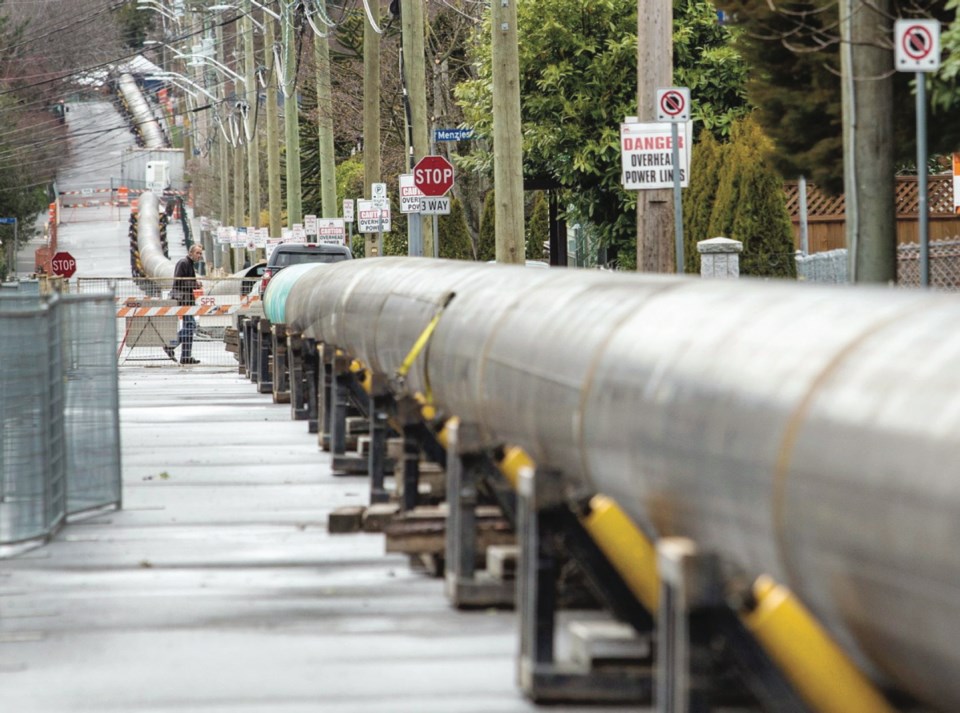Officials don’t expect any more major conflicts like the one over Grange Road trees, as the Capital Regional District’s sewage treatment project pushes through the community in the new year.
Under the original routing, about 50 trees on Saanich’s Grange Road would have had to come down in order to lay a 19-kilometre pipe connecting the McLoughlin Point regional sewage-treatment plant to the residuals plant at Hartland Road landfill.
But that met a groundswell of opposition in early December, prompting officials to shift the route to the other side of the road (away from an existing trench) so the trees could be saved.
Grange Road was “unique” in terms of the number of trees concentrated in a small area and forming a street canopy, said Elizabeth Scott, deputy project director.
“We can certainly understand the value residents place on them. We will have other tree impacts associated with the project. It’s unavoidable. But they are not concentrated like they were on Grange Road,” Scott said.
“In that case, we were seeking to minimize the construction impacts associated with blasting and use the existing rock trench. But we heard clearly from residents that they valued the trees. So we’re happy to have been able to adjust.”
Minimizing neighbourhood impacts as construction of the CRD’s $765-million sewage-treatment project hits high gear will be manageable but challenging in the coming year, Scott said.
“We work very hard on trying to get information out to the community and balancing community impacts,” she said.
Scott notes that building the sewage-treatment project means significant construction “in a lot of different areas in an urban environment,” so there will be some impacts to communities. And 2019 will be a big construction year.
The focus in 2018 and earlier was on planning and procurement, but 2019 “will be all about construction” along roadways in Victoria, Esquimalt and Saanich as pipes, pump stations and holding tanks are put in the ground.
“All of that planning will come together and there will be rapid construction progress across the board,” Scott said. “People will see that and hopefully be encouraged by seeing [it] … on track with the deadline to meet the federal regulation by Dec. 31, 2020.”
The sewage-treatment project consists of three construction projects: the McLoughlin Point wastewater treatment plant and outfall in Esquimalt; a residuals treatment plant at Hartland Landfill; and all the pipes and pumps in between.
Construction of all the major components is now underway with construction of the treatment plant at McLoughlin Point underway since 2017.
Scott said it’s exciting to see the plant take shape.
“We’re out of the ground there. We’ve got concrete pours going on. If you have the opportunity to see it, it changes almost daily. You can really see the plant coming up, so it’s an exciting time on that part of the project,” she said.
Work on the residuals treatment facility at Hartland Landfill began in late spring 2018, and construction for the majority of the conveyance system (the pumps and pipes) also began in 2018.
Some major hurdles have already been passed, including completion of the under-harbour connection between McLoughlin Point and Ogden Point in James Bay.
The Clover Point Pump Station, constructed in the 1970s, which currently pumps screened sewage directly into the ocean, is being upgraded. The expanded plant is being reconfigured to pump wastewater to McLoughlin for tertiary treatment.
During 2019, a new forcemain will be built in segments along Dallas Road to connect with the under-harbour connection at Ogden Point.
Running from McLoughlin Point in Esquimalt to the Hartland Landfill in Saanich will be what’s known as the residuals solids conveyance line. It is actually two pipes and three small pump stations connecting McLoughlin with the residuals treatment facility at Hartland.
The first pipe — 250 mm (10 inches) wide and 19.3 kilometres long — will transport residual solids from McLoughlin to the Hartland facility for treatment. The second pipe, with a diameter of a 300 mm (12 inches), will be 12.4 kilometres long. It will return the liquid removed from the solids to the Marigold pump station from where it will be returned to the McLoughlin Point tertiary treatment plant.



